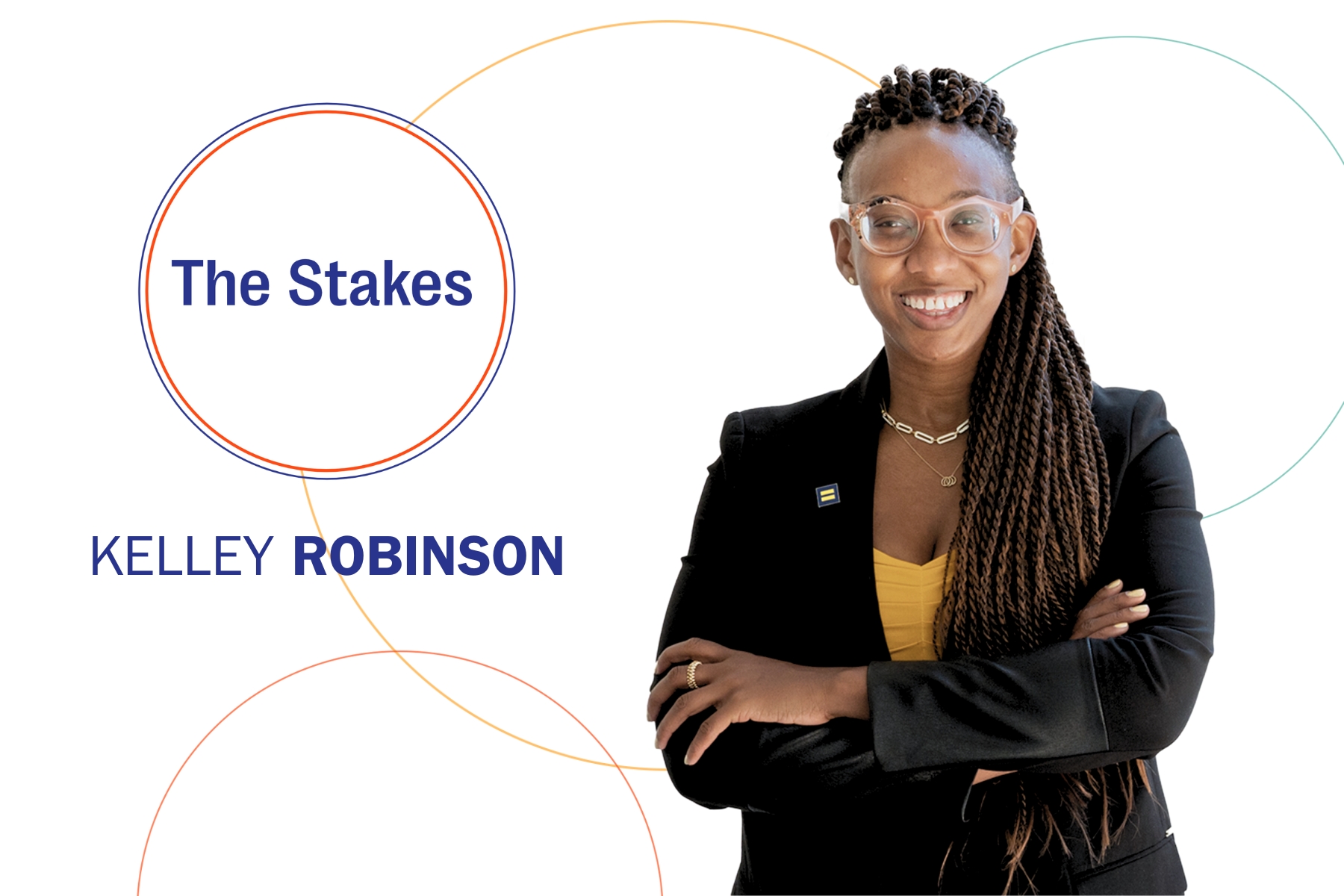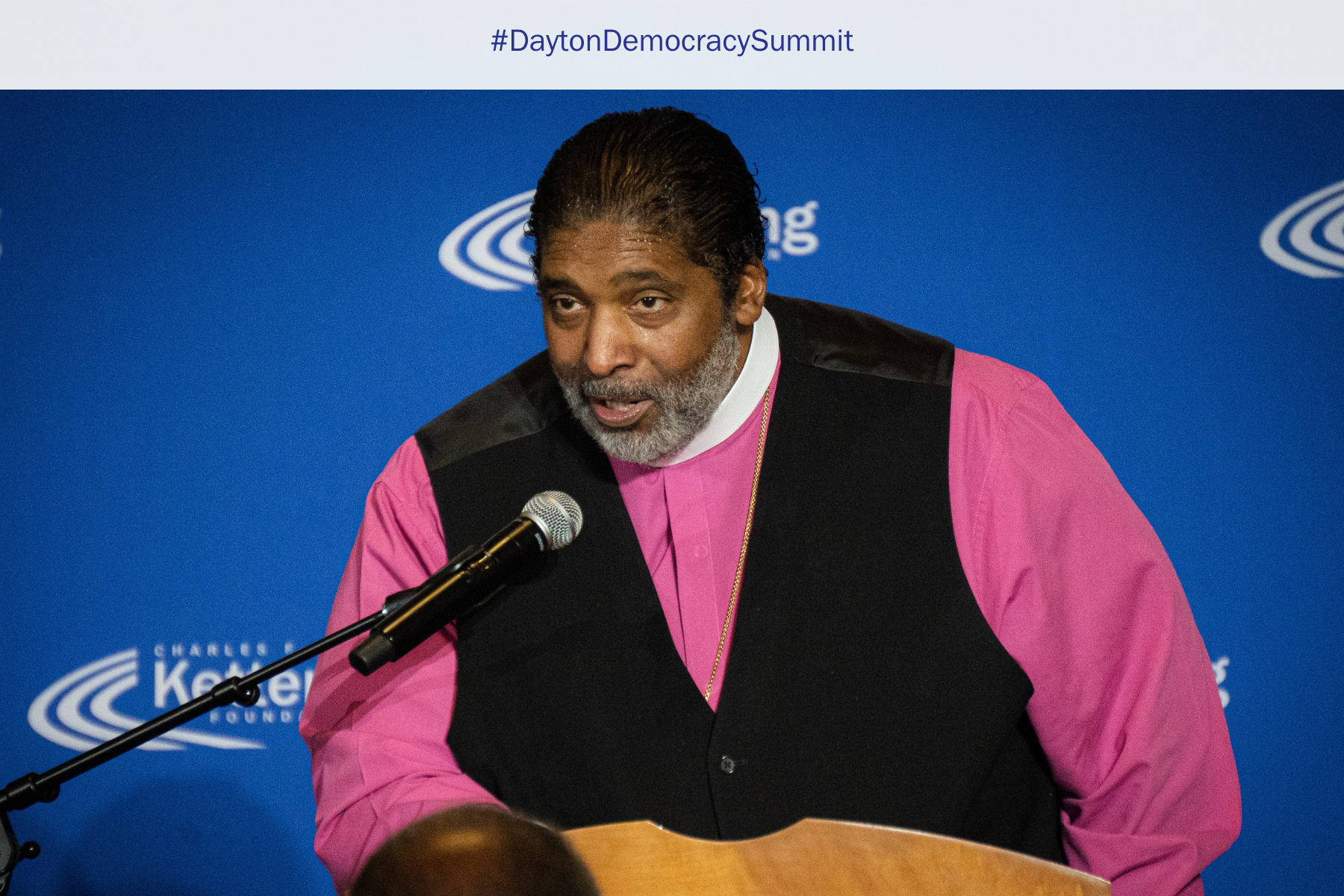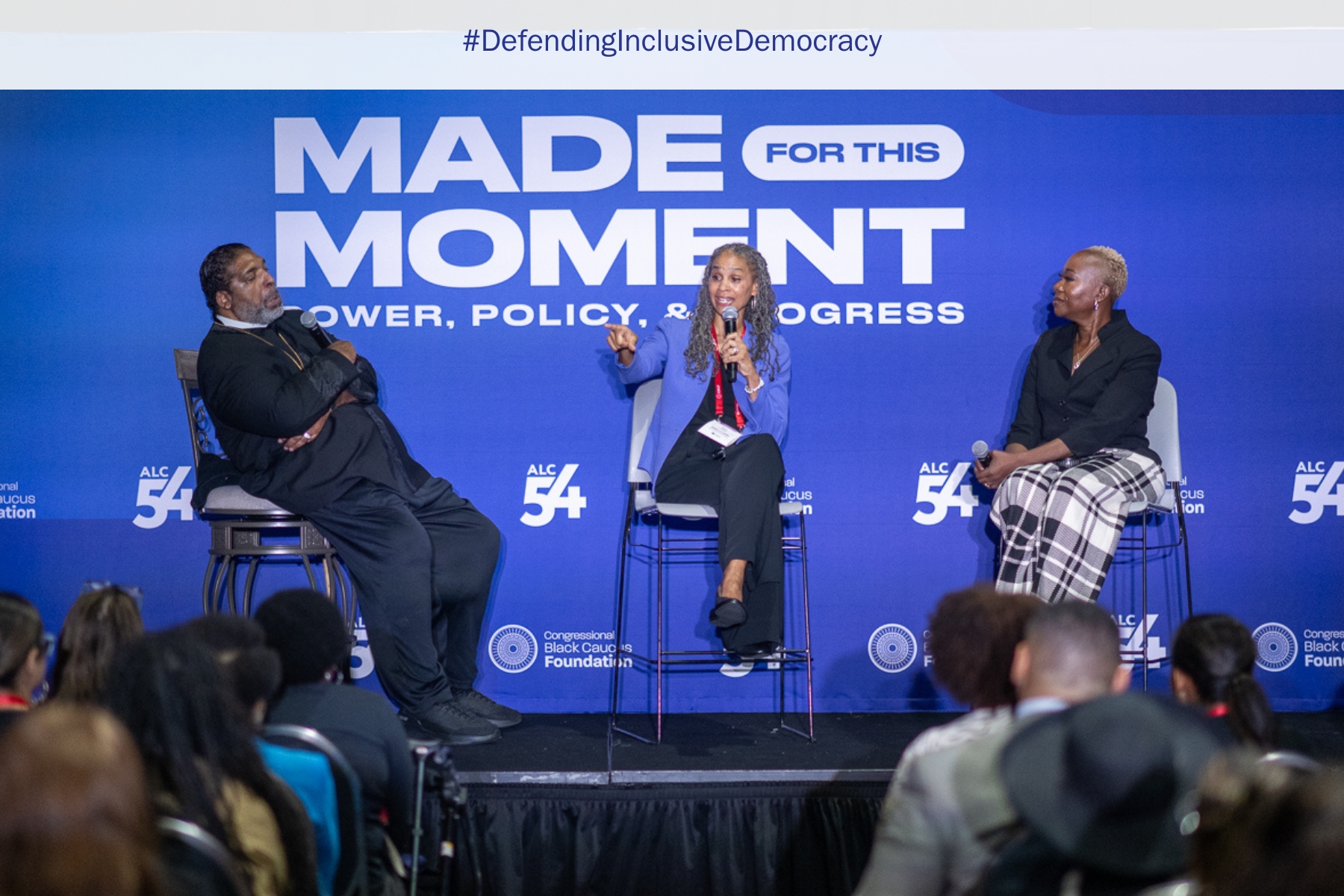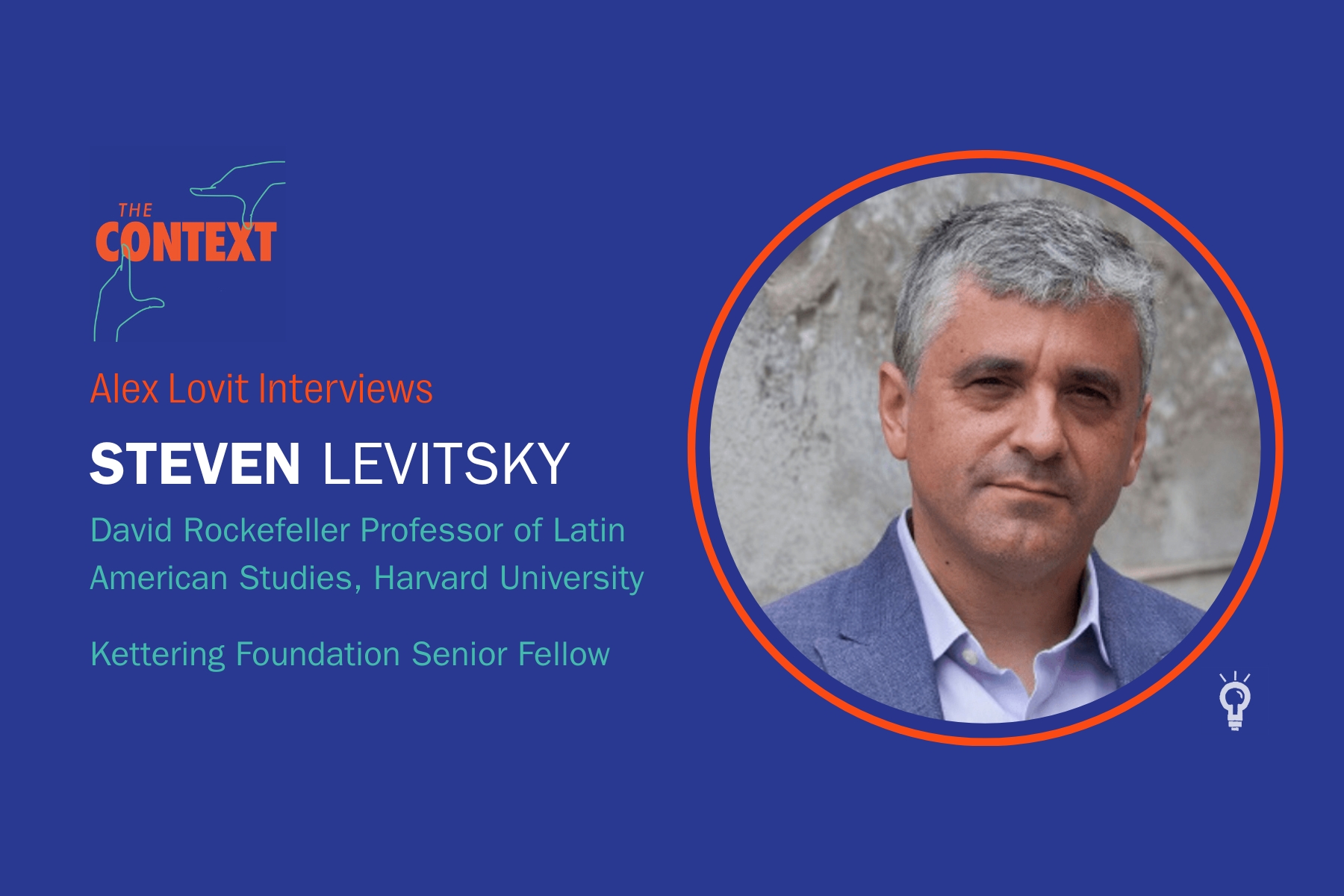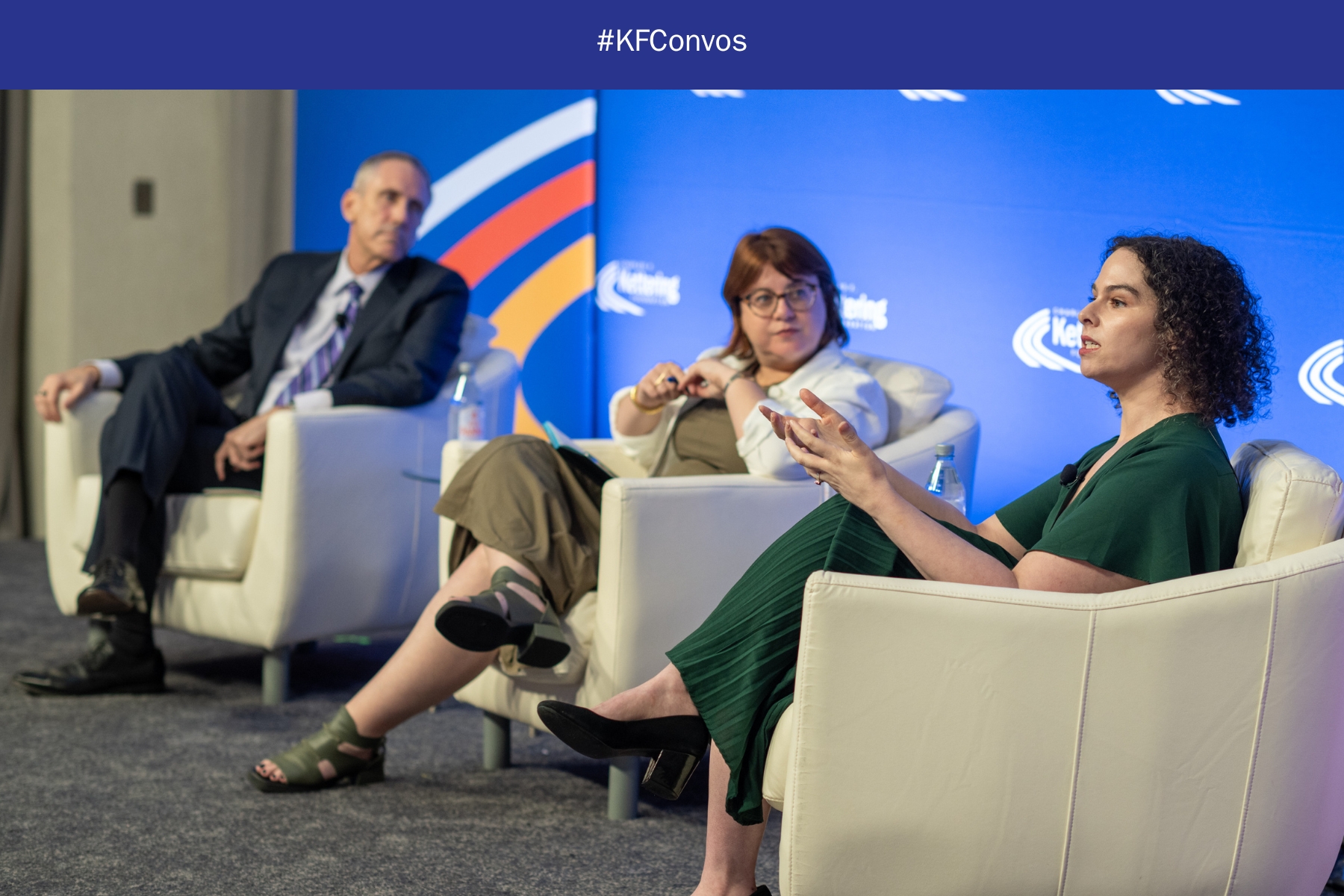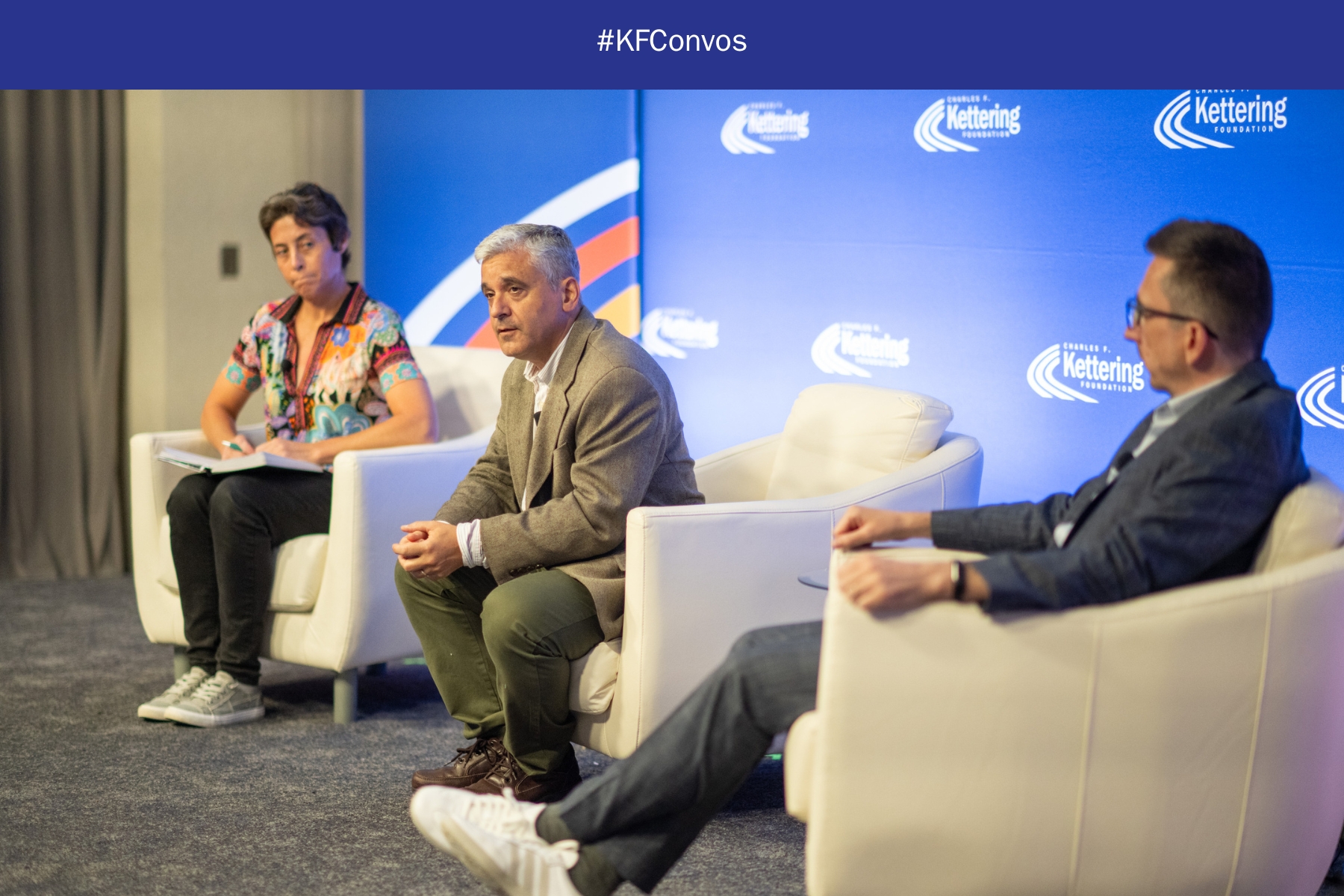Kettering Conversations with Democracy Innovators: Erosion of Democracy—Ohio in the Spotlight

On September 7, the Kettering Foundation held the third in a series of Kettering Conversations with Democracy Innovators before a live audience at the Athletic Club of Columbus and online. This discussion focused on Ohio and signs that in the Foundation’s home state, democracy is eroding.
Three distinguished Ohioans participated:
Nancy Rogers, a former Ohio attorney general, moderated the panel. She is professor emeritus at The Ohio State University Moritz College of Law.
Maureen O’Connor, a Republican, was the 10th chief justice of the Ohio Supreme Court and the first woman to lead the judicial branch in Ohio. Since her retirement, her focus has been on changing the way Ohio redistricts legislative boundaries.
David Pepper is a former Cincinnati city councilman and former chair of the Ohio Democratic Party. He is the author of several books, including Laboratories of Autocracy: A Wake-Up Call from Behind the Lines and Saving Democracy: A User’s Manual for Every American.
Rogers kicked off the discussion by asking Pepper to help the audience understand the warning signs of when democracy is in danger of slipping into autocracy. He asked the audience, “Okay, pretend it’s not America. What would we say if we saw all the following things happening in another country[:] . . . a nonstop assault on the rule of law, threatening justices or judges, attacking the very jurisdiction of courts over political matters, defying court orders. . . . If we saw that in another country, we would say, ‘That country has no rule of law.’. . . We would all say as Americans, ‘My God, that country is losing its democracy.’ And every single factor I just mentioned, and many more, are happening in states in this country, including the [Ohio] State House right down the street. . . . We have to see the warning signs for what they are and for what we would see elsewhere if they were happening.”
Rogers asked O’Connor why, when she stepped down as chief justice at the end of 2022, she chose to work on changing how Ohio chooses the boundaries of its legislative and congressional districts.
“Ohio is one of the worst gerrymandered states in the country,” responded O’Connor. “The only solution is a constitutional amendment to the Ohio Constitution that is going to create a redistricting commission that is populated by citizens.” She reminded the audience that in Ohio, unlike some other states, citizens have the right to change the state constitution through the ballot. That holds the key to the answer, she said.
The 15-member commission O’Connor envisions would be composed of five Republicans, five Democrats, and five independents from across Ohio. It would prohibit the participation of office holders, their relatives, and lobbyists. Such a system would, she said, ensure fair districts and fair representation in both the Ohio legislature and in Congress.
Rogers brought up Ohio voters’ resounding rejection of Issue 1 this past August. Had Issue 1 passed, it would have made it more difficult for Ohio voters to change the state constitution and would have raised to 60 percent the votes necessary for an amendment to pass. The measure, which lost by 14 percentage points, was widely seen as a last-ditch effort on the part of conservatives to make it more difficult for an abortion rights amendment to pass in November.
Pepper pointed out that a politically diverse coalition rejected the amendment, and that even very conservative counties voted no. “A lot of people crossed over and voted against their own party to vote no, and we better cling to that coalition going forward. . . . [This shows that] there is a prodemocracy map in Ohio to build on for 2024,” Pepper said. But he also sounded a cautionary tone.
“Issue 1 was defense. It was effective defense, but that’s all it was. We stopped something,” Pepper said. “And my hope is we channel all the energy, and that multiparty coalition that just did that great thing last month, we channel that into an offensive strategy that’s for democracy.”
O’Connor pointed out that the attempt to weaken the people’s right to amend the state constitution with a simple majority was aimed, not merely at the abortion rights amendment, but the proposed constitutional amendment to stop gerrymandering. “What I find disturbing is the structural disintegration of our constitution that was attempted in order to defeat the reproductive right amendment in November. But even more so, I think what is even more fundamental and more motivating for the folks that were pushing yes on Issue 1 is what we’re trying to do in November of ’24, and that is a constitutional amendment to stop gerrymandering, and to then have fair and equal districts and nonpartisan alliances.” If gerrymandering is outlawed, she argued, lawmakers will be more likely to put politics aside and get things done for the people. “That’s what we want our legislature to do, and that’s what we want all of our public servants, all of our officeholders to do.”
Pepper agreed with O’Connor that gerrymandering is at the heart of much that is wrong with our democracy. “The real breakdown in democracy,” he said, “is the lack of almost any officeholder in the majority who ever faces a real election, and that lack of accountability where people can do whatever they want . . . I think to start, the gerrymandering is so critical. . . . The truth is, once you have pretty clear criteria about how to do a map, it’s not all that hard to get to the map.”
Pepper suggested that nonprofit organizations, homeless shelters, food banks, and every library should make it possible for those who need services to register to vote. He pointed out that Senator Sherrod Brown, when Ohio secretary of state, persuaded McDonald’s to put voter registration forms on trays. High schools and colleges should also promote voter registration, he said.
Rogers asked how ordinary people can persuade their lawmakers to put democracy ahead of partisan interests.
O’Connor said the response on the part of individual lawmakers has to be “we the people,” not “we the party.” She said that officeholders who walk into the legislature and just wait for instructions from their party on how to vote, might well ask themselves, “What am I doing here?”
“And I know that the response is going to be, ‘Well, you know what’s good for the party is good for the state. . . . So, whatever we do, the ends justify the means.’ No. I’m sorry, that’s not an excuse, and that will never fly.”
One problem, said Pepper, is that “no one pays attention to [state legislatures]. . . . And the polls show [that] almost no one can name their state rep. . . . So, my first answer to your question is, go make some noise. Go to the local district meeting and tell them, ‘I don’t like the way you’re voting.’ . . . They are living in a world of no accountability. Any way you can bring accountability, bring it. Run, support people running, show up to meetings.”
O’Connor agreed and brought up the need for young people to become involved. “Our school systems, I believe, are morally obligated to teach civics. . . . And I think [about] organizations that engage with youngsters. We have Boy Scouts, Girl Scouts. They do that. They’ve got badges for that sort of thing. Let’s follow that type of an example. . . . Let’s get kids involved so that when they do turn 18, they can’t wait to register to vote on their birthday. And I think we can change your community, the state, and the nation by doing that sort of initiative.”
Stream the whole program via YouTube and Vimeo.
